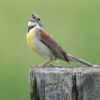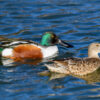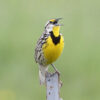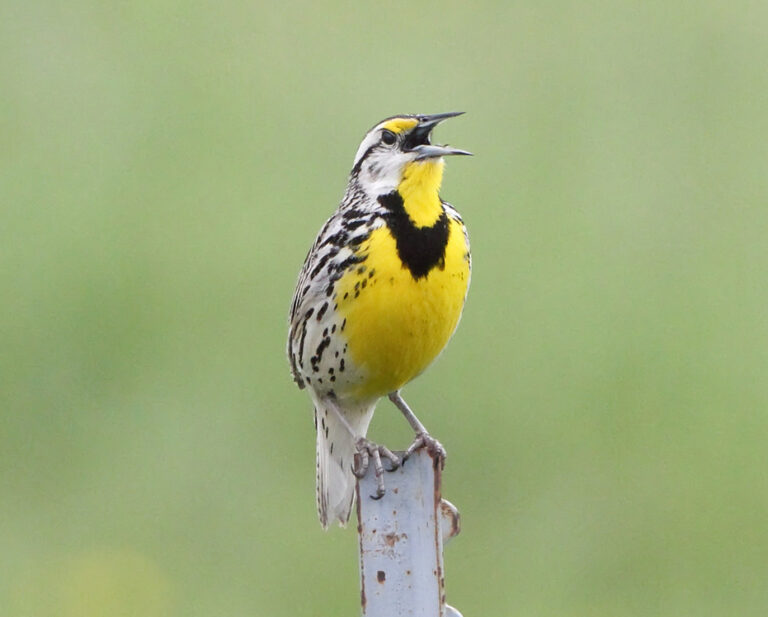
Eastern Meadowlark, Sturnella magna
Western Meadowlark, Sturnella neglecta
Bill Rowe
Meadowlarks are instant favorites among new birders, with their vivid yellow-and-black underparts and whistled songs, making them easy to spot out in a prairie or a hayfield—that is, as long as they are perched up and facing you. Once almost universally abundant, they have been hard hit by today’s farming practices, especially the widespread conversion of grassland to row crops (corn, soybeans, etc.), and their numbers have shrunk severely in some areas. That said, they are still common birds wherever good grassland remains. The two widespread species, Eastern and Western, divide North America roughly according to their names, with the Eastern’s range covering the east and the Midwest and extending all the way to northern South America. The Western’s range covers much of southern Canada, the western U.S., and some of Mexico, overlapping with the Eastern in the north-central and Great Plains states, with only occasional hybridization between the two despite their nearly identical appearance. (Missouri has breeding Westerns only in some of the northernmost and westernmost counties, but they spread across the state in migration and winter.) News flash: The arid grasslands of the southwest are occupied by a third meadowlark, considered a subspecies of Eastern until just last year, when the evidence finally convinced the AOS (American Ornithological Society) to give it the status of a separate species, the Chihuahuan Meadowlark. Final note: Meadowlarks aren’t larks! They are blackbird relatives, or icterids, like the orioles.
IDENTIFICATION: There is no problem recognizing a meadowlark per se: besides the yellow and the black V, it is chunky and short-tailed, with bold head stripes. In flight it reminds you of a starling but with intermittent coasting between flaps. The problem is separating Eastern and Western. Field guides will tell you some visual differences to look for, most of which are judgment calls (e.g., Westerns look paler, have narrower barring on the tail and wing feathers, etc.). One mark that is pretty conclusive is the color of the malar region that borders the throat and touches the base of the bill; this strip is all or mostly white in Eastern, mostly yellow in Western—but seeing this is difficult without a scope view or a photograph. Caution: in fall and winter, the yellow may be concealed by feather tips, making the birds drab and this mark unusable. Most of the time, voices are the best identifiers. SONG: Eastern gives a few sweet, slurred whistles, like seeyou-seeyeer. Western starts with a whistle or two and then descends into a complex warble or gurgle. CALLS: Some are the same, but Eastern has a unique buzzy dzert while Western has a unique low chuck or cluck like a blackbird. Listen to these at the links below.
ST. LOUIS STATUS: Eastern is our spring and summer breeding bird, locally common in good habitat, and present in winter as well. Westerns are here typically November-March as uncommon migrants and winter residents, in flocks by themselves or together with Easterns, often in open fields of corn stubble, etc. March is a great time to compare the species, as both are singing then.
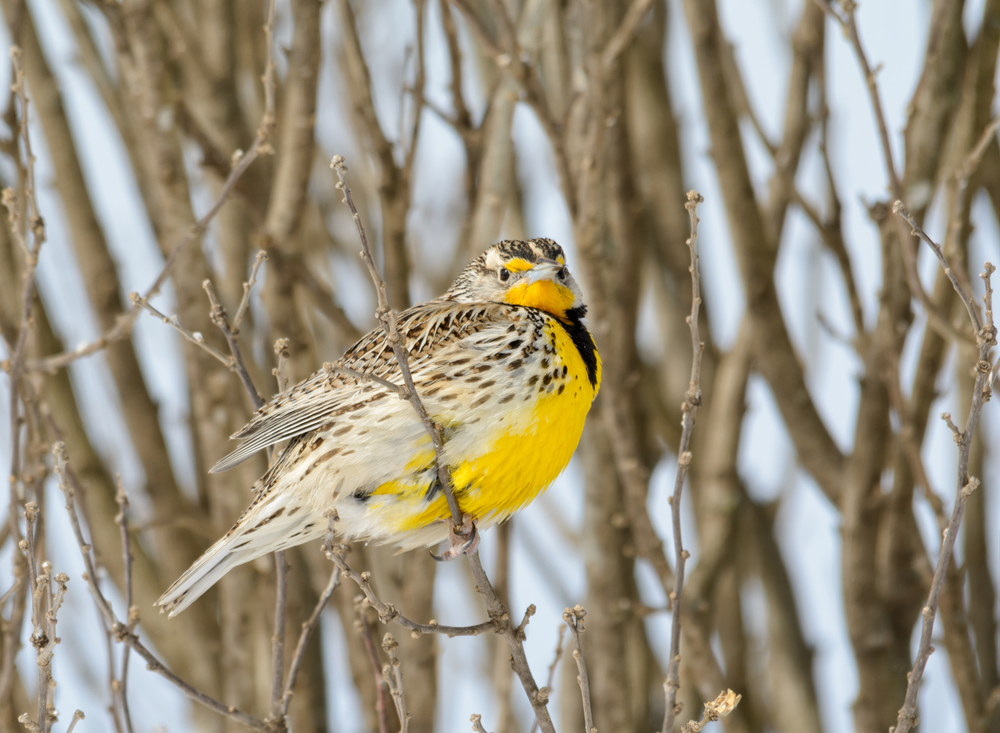
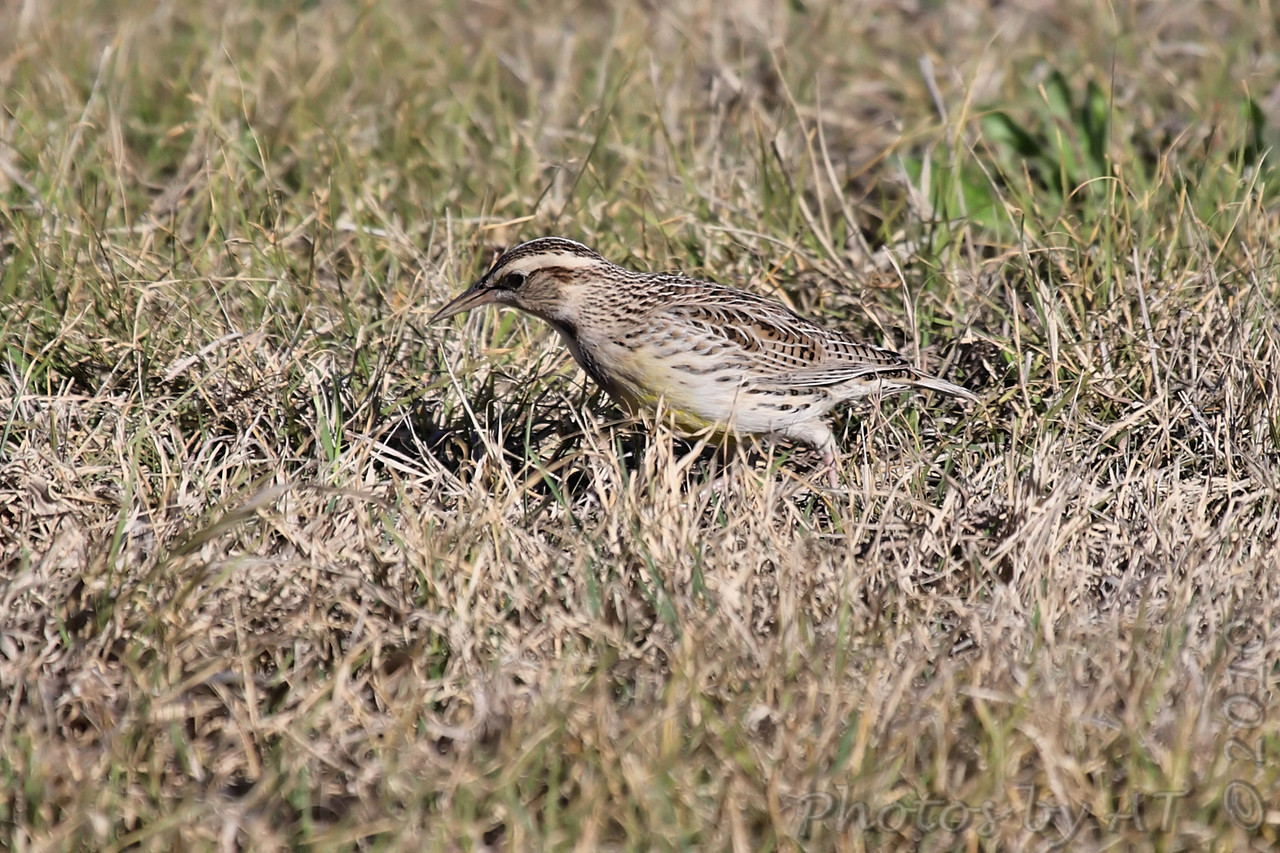
Western: Note yellow malar and compare with Eastern, above
Winter, yellow obscured; other
features suggest Western.
Photo Credit: Al Smith


